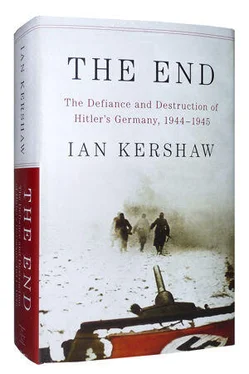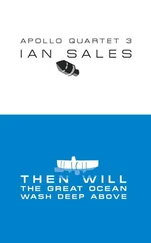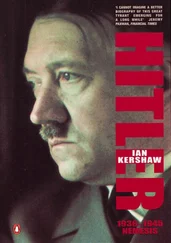131. BAB, R3/1537, fos. 3–6 (18.3.45).
132. Hitler spoke to Goebbels in highly negative terms in late March about Speer being ‘unreliable’ and ‘failing’ at a critical time and showing a ‘defeatist’ character, tendencies ‘incompatible with the National Socialist view of the war’.— TBJG , II/15, pp. 619–20 (28.3.45).
133. This is the gist of Müller’s interpretation in DRZW , 10/2, p. 87.
134. For Speer’s late conversion to the need to save the ‘means of existence of the … people in a lost war’, see Henke, pp. 431–2.
135. BAB, R3/1538, fo. 16, handwritten letter by Speer to Hitler, 29.3.45.
136. Schwendemann, ‘ “Drastic Measures”’, p. 605, suggests, perhaps going too far, that Speer was seeking ‘to show Hitler a way out, by offering the Führer his services as a kind of saviour, thus securing his favour’.
137. Speer, pp. 444–5; BAB, R3/1623a, fos. 39–43, two Fernschreiben of Keitel, 18.3.45; implementation order of Bormann, 19.3.45.
138. BAB, R3/1623a, fos. 46–7, ‘Zerstörungsmaßnahmen im Reichsgebiet’, Lt.-Gen. August Winter (Deputy Chief of the OKW Operations Staff) to Speer, 20.3.45, passing on Hitler’s order of the previous day (printed in IMT , vol. 41, pp. 430–31, and Hitlers Weisungen für die Kriegführung 1939–1945: Dokumente des Oberkommandos dep Wehrmacht , ed. Walther Hubatsch, pb. edn., Munich, 1965, pp. 348–9).
139. BAB, R3/1538, fos. 14–15, Speer to Hitler, 29.3.45; IMT , vol. 41, pp. 425–9; Speer, pp. 445–6.
140. See Henke, pp. 432–5; DRZW , 10/2 (Müller), p. 93; and Eichholtz, pp. 663–9. In some factories, crucial component parts were taken out of machines and hidden so that they could later be reinstated.—Zimmermann, Pflicht , p. 60.
141. Speer, pp. 450–59; BAB, R3/1661, fos. 5–8, Reiseprogramm Speer, Schulze-Fielitz, Hupfauer, etc., 22–5.3.45; fos. 20–22, Walter Rohland: Niederschrift über die Ereignisse vom 15.3 bis 15.4.45; R3/1623a, fo. 50, Bormann to the Gauleiter, passing on Hitler’s evacuation orders with the stipulation that the evacuation was not a matter for debate, and that the accommodation of the evacuees within Germany simply ‘had to be mastered’ through improvisation; IMT , vol. 41, pp. 491–3 (Rohland’s testimony at Nuremberg).
142. Speer, pp. 448, 453–4, for Model’s stance. The Wehrmacht’s head of transport spoke of creating ‘a transport desert’ in abandoned areas.—BAB, R3/1623a, fo. 59, Chef des Transportwesens der Wehrmacht, Fernschreiben 29.3.45 (referred to in Speer, p. 459).
143. Speer, pp. 454–5; BAB, R3/1626, fo. 14, unknown eyewitness account, 13.9.45.
144. Speer, pp. 457–61 (quotation p. 460).
145. This is how Hitler saw it, in speaking of the matter to Goebbels soon afterwards.— TBJG , II/15, p. 643 (31.3.45). Speer’s own depiction of his defiance was almost certainly at least in part contrived. See DRZW , 10/2 (Müller), pp. 94–5.
146. Speer registered with a note in his files Hitler’s agreement that ‘scorched earth’ was pointless for a small area like Germany and could only have an effect in a huge country like Russia. He immediately transmitted Hitler’s amended order leaving implementation in Speer’s hands.—BAB, R3/1623a, fos. 75, 78–80, 85–6 (30.3.45). On 3 April (fos. 106, 108) he replied to the request from Gauleiter Ueberreither (Niederdonau) for clarification on destruction of waterworks and power stations in his region by stating: ‘According to the Führer order of 30.3.45 there is no scorched earth’, and stipulating only temporary immobilization which ‘fulfils the stated aim of the Führer’.
147. The OKW stipulated on 3 April that, despite the Führer order for the destruction of all installations that might be useful to the enemy, it could prove expedient in some cases to limit this to a ‘lengthy breach’ ( nachhaltige Unterbrechung ) which could be repaired for German use if there was a probability of retaking the bridges. The Wehrmacht was keen to establish its sole responsibility for the destruction of military installations. A few days later, a revised directive emphasized the need to destroy operationally important bridges, as determined by the OKW, with the most severe punishment for failure to carry this out.— KTB/SKL , part A, vol. 68, pp. 46 (3.4.45), 75–7 (5.4.45), 128 (8.4.45).
148. Henke, p. 434. A far more positive interpretation of Speer’s motives is provided in the early assessment by Reimer Hansen, ‘Albert Speers Konflikt mit Hitler’, Geschichte in Wissenschaft und Unterricht , 17 (1966), pp. 596–621, based heavily upon the documents and evidence presented to the Nuremberg Trials. Later research—particularly since the publication of Matthias Schmidt, Albert Speer: Das Ende eines Mythos , Berne and Munich, 1982—has tended to be far more critically disposed towards Speer. See, for example, Alfred C. Mierzejewski, ‘When Did Albert Speer Give up?’ Historical Journal , 31 (1988), pp. 391–7, and, more recently, the contribution by Rolf-Dieter Müller to DRZW , 10/2.
149. TBJG , II/15, p. 613 (28.3.45).
150. See also on this point, DRZW , 10/2 (Müller), p. 92.
1. Das letzte halbe Jahr: Stimmungsberichte der Wehrmachtpropaganda 1944/45 , ed. Wolfram Wette, Ricarda Bremer and Detlef Vogel, Essen, 2001, p. 338 (10.4.45).
2. For destruction in the Tiergarten and Grunewald and the nightly activity in the city (‘eine hektische Genußsucht’), see the diary entries of the Danish correspondent Jacob Kronika, Der Untergang Berlins , Flensburg, 1946, pp. 79, 91, 98–9, 149 (30.3.45, 7.4.45, 10.4.45, 23.4.45). A description—though perhaps drawing in part on distorted memory—of Berlin, shortly before the Soviet attack, can be found in IWM, ‘Second World War Memoirs of P. E. v. Stemann’, Berlin correspondent between 1942 and 1945 of the Danish newspaper Berlinske Tidende , fos. 236–7. Vivid depictions of the city in April 1945 are provided by David Clay Large, Berlin , New York, 2000, pp. 358–9, and Roger Moorhouse, Berlin at War: Life and Death in Hitler’s Capital 1939–45 , London, 2010, pp. 365–9.
3. Goebbels remarked in his diary on the emptiness of Berlin’s streets at Easter 1945 ( TBJG , II/15, p. 668, 5.4.45).
4. Quoted in Moorhouse, p. 367.
5. TBJG , II/15, p. 692.
6. A fitting term, used by Hans Mommsen, ‘The Dissolution of the Third Reich: Crisis Management and Collapse, 1943–1945’, Bulletin of the German Historical Institute, Washington DC , 27 (2000), p. 20, and Stephen G. Fritz, Endkampf: Soldiers, Civilians, and the Death of the Third Reich , Lexington, Ky., 2004, ch. 5.
7. DZW , 6, p. 561; and NAL, WO219/1651, fo. 145, SHAEF digests of post-war interrogations of Jodl and Kesselring, 23.5.45.
8. American losses in the battle for the Ruhr totalled around 10,000 men.— DZW , 6, p. 564.
9. For the behaviour of French troops, see Heinrich Schwendemann, ‘Das Kriegsende in Ostpreußen und in Südbaden im Vergleich’, in Bernd Martin (ed.), Der Zweite Weltkrieg und seine Folgen: Ereignisse—Auswirkungen—Reflexionen , Freiburg, 2006, pp. 101, 104; and Richard Bessel, Germany 1945: From War to Peace , London, 2009, pp. 116–17, 158–9. Evidently, the very skin colour of the North African soldiers in the French army gave rise to great anxiety among the population which had often never before seen other than white people. This may have led to exaggeration of the numbers of rapes said to have been perpetrated by ‘colonial’ troops. Numerous parish reports indicating rape and looting—though there were many cases where none were reported—are contained in Josef F. Göhri, Die Franzosen kommen! Kriegsereignisse im Breisgau und in der Ortenau , Horb am Neckar, 2005, pp. 17, 24–5, 43, 46, 50, 53, 60, 82, 88, 91, 94, 98, 119, 124–5; and Hermann Riedel, Halt! Schweizer Grenze! , Konstanz, 1983, pp. 233, 237–8, 263, 305 (where more than 200 cases were mentioned). See also Bernd Serger, Karin-Anne Böttcher and Gerd R. Ueberschär (eds.), Südbaden unter Hakenkreuz und Trikolore: Zeitzeugen berichten über das Kriegsende und die französische Besetzung 1945 , Freiburg in Breisgau, Berlin and Vienna, 2006, pp. 253, 257, 269, 311–25; Manfred Bosch, Der Neubeginn: Aus deutscher Nachkriegszeit. Südbaden 1945–1950 , Konstanz, 1988, p. 34; Der deutsche Südwesten zur Stunde Null , ed. Generallandesarchiv Karlsruhe, Karlsruhe, 1975, pp. 102–3; Paul Sauer, Demokratischer Neubeginn in Not und Elend: Das Land Württemberg-Baden von 1945 bis 1952 , Ulm, 1979, pp. 18–20; Von der Diktatur zur Besatzung: Das Kriegsende 1945 im Gebiet des heutigen Landkreises Sigmaringen , ed. Landkreis Sigmaringen, Sigmaringen, 1995, pp. 92–3.
Читать дальше












